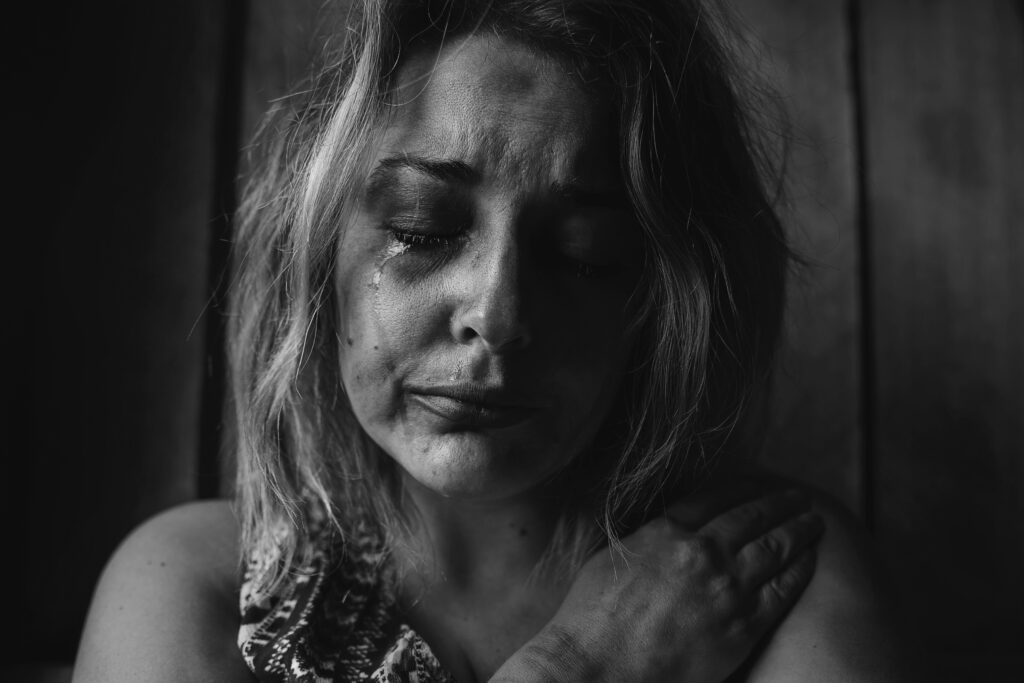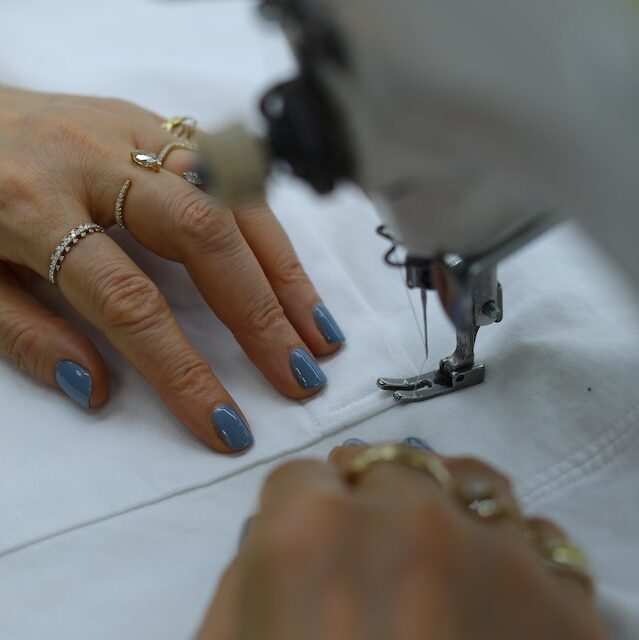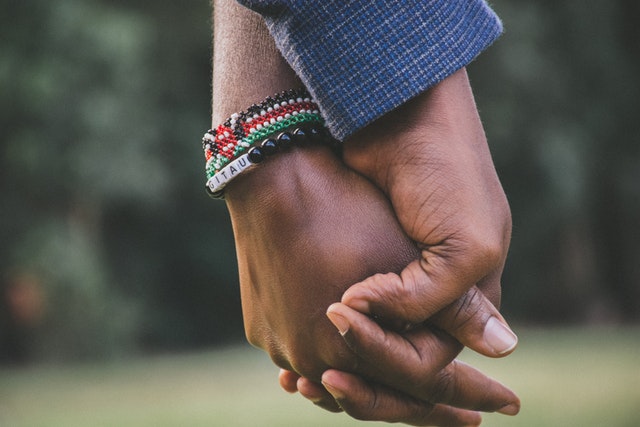Victims of human trafficking are often traumatised by high levels of psychological and physical stress. They need professional support to deal with their traumas – but as a society, we too should be learning how to offer such help.

HUMAN TRAFFICKING AS TRAUMATISING ENVIRONMENT
People currently affected by modern slavery, or who have been in the past, will often describe verbal abuse, degrading working conditions and acts of physical violence. Unsurprisingly, therefore, many of those affected by human trafficking carry bear severe traumas from the experience. Those responsible are often aware of the psychological processes involved, and will exploit them to make their victims dependent on them and destroy their self-confidence. Victims are often isolated from the outside world, and their traffickers are the only people they trust. By sporadically showing love and affection, the traffickers communicate to their victims the feeling of finally being loved by someone. This leads to an effect commonly referred to as “trauma bonding”, in which the relationship is shaped by episodes of violence and rage, but these are forgiven by the victims because they are interspersed with moments of positivity.
THE RESULTS OF TRAUMA

During trauma, the psyche of the sufferer is damaged, as is their belief in their own abilities, and in other people. As a result, the trauma continues to exist even when the situation that triggered it has been overcome, and even if the victims do manage to seek help, they continue to suffer from the after-effects of the trauma. Precisely how a trauma is expressed differs greatly from one person to another. Frequently, however, the symptoms include nightmares and flashbacks to the traumatic situations. At a social level, victims often show a lack of trust in other people. People with traumas frequently enter into a relationship in the expectation that they will be deceived or exploited by the other person.
For many people who have suffered traumas, therefore, it is extremely difficult to enter into social relationships, because these interactions never feel secure, and the brain is constantly in survival mode. Those affected usually have a low sense of self-esteem as well, find it difficult to control emotions, feel valueless, and often even blame themselves for the suffering they have been subjected to.
THERAPY AS HELP
Finding a way out of a trauma without outside help is difficult, if not impossible. With the help of therapy, however, victims can come to terms with their terrible past and learn new modes of behaviour for the future. Trauma therapy can be divided into three stages. The first of these stages focuses on stabilisation as victims are given relaxation exercises, and communicated new methods of dealing better with their fears, suicidal thoughts or flashbacks. This is followed by the second stage, of healing the trauma, when an analysis of the traumatising past events is carried out. The third and final phase is integration, when those affected have thoughts about their future, enabling them to finish with their past and develop strategies for avoiding flashbacks.
REBUILDING SECURITY, GAINING IN CONFIDENCE
Together with psychological care, it is important for those affected to experience greater safety and trust in everyday life. First of all, the victim’s physical safety needs to be guaranteed. Many victims fear being housed in joint accommodation with lots of other people, and feel as if they are in the secure protective environment. As important as physical safety, however, is that those affected should be able to rebuild trust both in themselves and their fellow humans. The sewing courses from Hope for the Future, therefore, offer the opportunity to develop their own skills in a secure environment, take decisions themselves, and regain self-confidence by doing so. While the victims learn that their wishes and needs are respected here, they are given framework conditions that simultaneously provide them with structure and stability. Traumas can be processed through the sewing courses, and entry into the world of work achieved. For foreign victims, German courses often represent an important step towards gaining greater self-confidence and security when in contact with other people. In many cases, control over one’s own body, awareness of movements and trust in one’s own skills need to be rebuilt at the same time. These goals can be achieved with dance and movement therapy.

WHY TRAUMA THERAPY IS A MATTER FOR ALL OF US
However, help for traumatised people cannot – and should not – come from the professional side alone. People who have no trust in their social environment require a strong community to cushion them and communicate a feeling of safety to them. If we are sensitised to traumas as a society, therefore, and learn how one can help those affected in overcoming these, then we can make it easier for traumatised people to define their journey back to a normal everyday life. Employers who demonstrate an understanding for trauma-related behaviour, fellow humans who offer help in everyday life, and relationships based on reliability and trust are important pillars victims can depend upon for support. In addition to this, retraumatisations can be avoided if those in the environment know which words, actions or situations could trigger these negative feelings in the victims.
HOW CAN YOU HELP?
If you would like to help people affected by trauma, be careful to take the following steps:
1. RECOGNISE TRAUMAS
Frequent symptoms of traumatisation include flashbacks, nightmares, nervousness, difficulty concentrating and jumpiness. Irritability, rage or apathy can also be signs of a traumatic past, however. From the outside, though, most traumas cannot be recognised with certainty. As a result, you should always speak to the person you assume is experiencing a trauma before making hasty diagnoses.
2. ACKNOWLEDGEMENT AND TOLERANCE
Even if it appears to the outside world as if victims are overreacting in a situation, one should not judge such behaviour. Usually, rage, isolation or other types of behaviour we perceive as negative are simply a natural reaction to bad experiences in the past, and should be acknowledged and accepted as such.
3. RESPOND TO THE WISHES OF VICTIMS
We all deal with negative experiences in different ways. And traumatic experiences are no exception to this rule. While it helps some victims to talk about their past, for others it is enough just to know someone is there for them. Some people may also want to offer help in everyday activities such as shopping, cleaning or organising specific things, while other victims will want to take responsibility for such tasks themselves. In this case, too, the same rule applies, and the best thing to do is to ask the person themselves how they can best be helped.
4. POSITIVE RELATIONSHIPS
To rebuild trust in victims, one should be particularly careful in relationships – no matter whether these be friendships or are of a romantic nature. People affected by human trafficking have usually experienced social relationships in their lives as unstable, and other people as unreliable and untrustworthy. For this reason, it is important that these behavioural patterns are not repeated, and that a “safe space” be created for traumatised people in which they can rely on promises. Praising the successes and positive sides of the person also helps in strengthening self-confidence.

5. DON’T PACK THE VICTIMS IN COTTON WOOL
When dealing with severely traumatised people in particular, one’s natural instinct is to try to protect them. At the same time, however, it is equally important not to take all responsibilities away from the victims, since these also offer opportunities to collect successful experiences when they have achieved something themselves. The same is true when it comes to taking decisions. Many trauma victims have had no control over their lives in the past, as a result of which they are unable to deal with it when suddenly confronted with numerous decisions. As long as they are not overstressed, therefore, victims should be allowed to make decisions relating to certain things themselves, and take back control of their lives by doing so.
6. SELF-PROTECTION
Hearing traumatising experiences can also be stressful for those offering the help. So make sure you, too, have someone you can talk to about the unsettling details. Also, it’s alright for you to communicate to the person affected that you no longer want to hear about their past. Self-protection should always be the priority. If we don’t distance ourselves from trauma, instead actively confronting it in all its forms, then the most difficult step has already been achieved. Trauma takes time to heal, but in a supportive community, the victims can rebuild trust, and Hope for the Future.
Translation by Tim Martinz-Lywood, European Exchange Ltd.
www.european-exchange.co.uk
#Trauma #Menschenhandel #Traumatherapie #Trauma-Bindung #Vertrauen #againsthumantrafficking #gegenmenschenhandel #endexploitation #endtrafficking #hopeforthefuture
